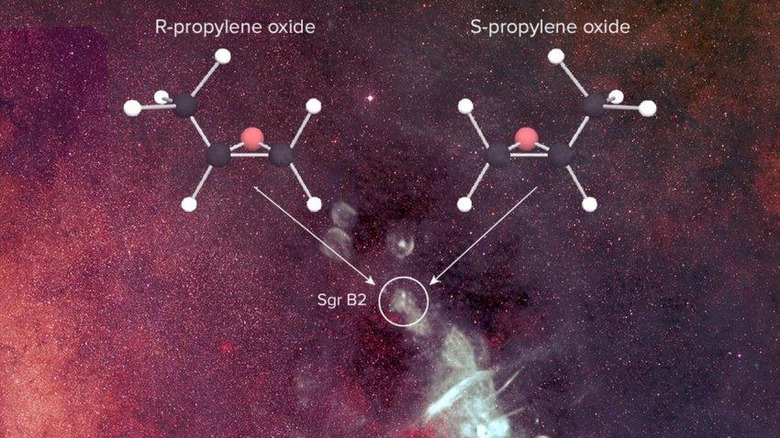Asymmetric Molecule Detected In Space, Points To Cosmic Origins Of Life On Earth
Researchers have produced evidence of a complex organic molecule in space for the first time. This complex organic molecule's asymmetric structure is the same as molecules found on Earth, the same molecules that are necessary for life as we know it on our planet. "It is a pioneering leap forward in our understanding of how prebiotic molecules are made in the universe and the effects they may have on the origins of life," said Brett McGuire, chemist at the National Radio Astronomy Observatory in Charlottesville, Virginia.
What's interesting about this complex organic molecule is not just that it exists, but that it has the chemical property chirality. Each molecule has a mirrored version of itself, in this case R and S propylene oxide.
This is not the first time we've seen these molecules appearing in pieces of rock that've fallen to Earth from space. It is, however, the first time this sort of molecule has been found in interstellar space. Out beyond our atmosphere.
The study released this week was released in the scientific journal Science. You can see a simplification of the concept in the video below:
"Propylene oxide is detected in the gas phase in a cold, extended molecular shell around the embedded, massive protostellar clusters in the Sagittarius B2 star-forming region," said the outline for the scientific paper in which this material is presented.
"This material is representative of the earliest stage of solar system evolution in which a chiral molecule has been found."

You can learn more about this research in the paper published in Science under code DOI: 10.1126/science.aae0328. This paper was authored by Brett A. McGuire, P. Brandon Carroll, Ryan A. Loomis, Ian A. Finneran, Philip R. Jewell, Anthony J. Remijan, and Geoffrey A. Blake.
